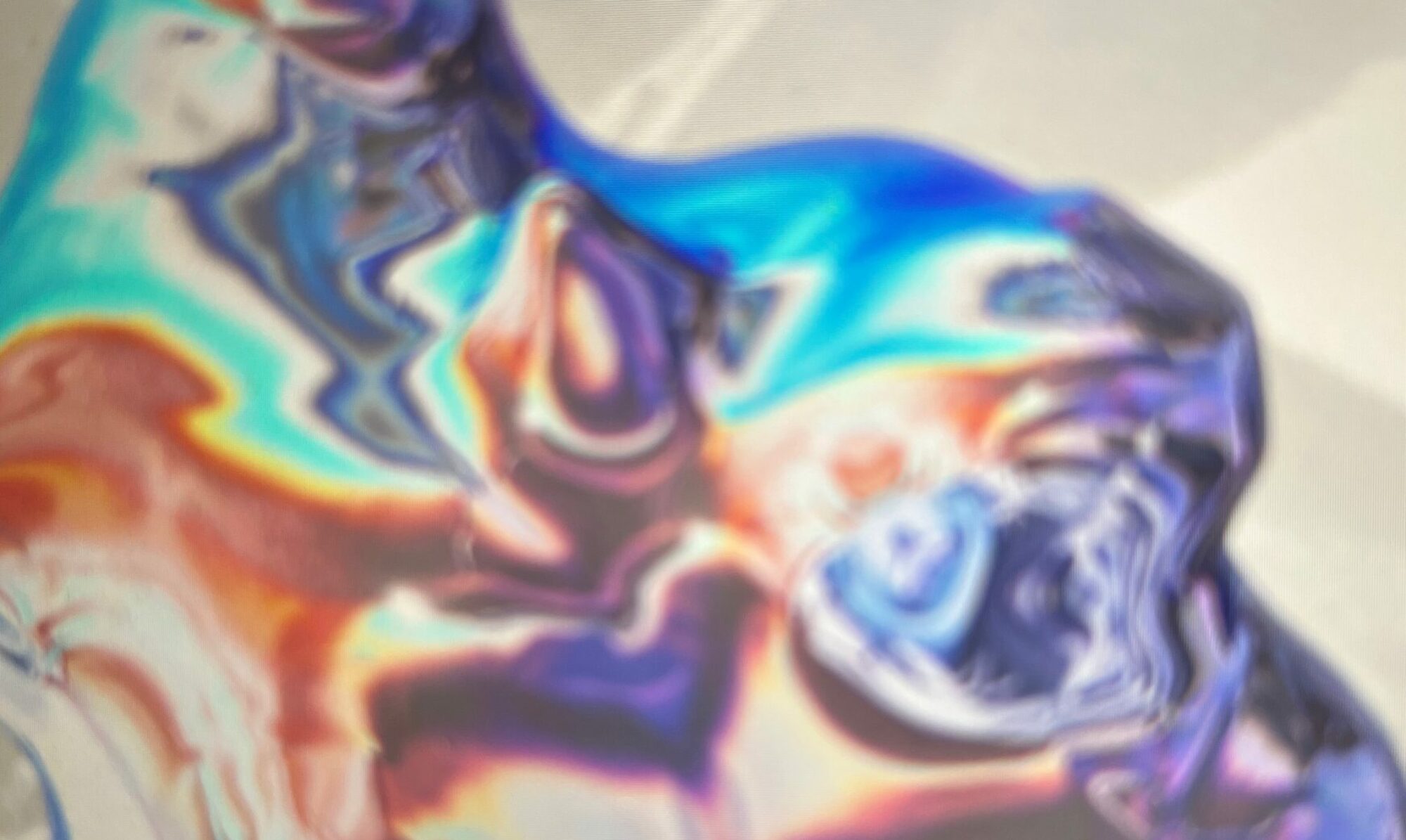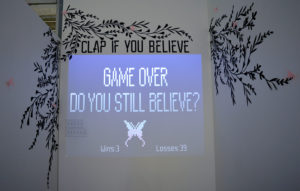Believe is an interactive installation which takes the form of a game which plays itself, with or without a living player present.
The game has a deceptively simple set of instructions: ‘clap if you believe in faeries.’ Using audio-responsive input, the game triggers either a win or lose condition dependent on the vigor of the participant(s) claps, and offers a congratulatory or discouraging message based on if the win condition has been met.
While the game itself is rather simple to win on a temporary basis, the game runs for the entire time it is installed, and does not sit idly by if a player is not present. Without satisfactory participation, the game will repeatedly activate the lose condition, tallying an astronomical number of losses on the win/lose counter. Without constant attention and collective organization, the losses quickly surpass the wins, rapidly reaching a threshold from which the tide cannot be turned, and the game cannot be ‘won.’ The game itself is ultimately indifferent to the presence of an interactive force—it neither celebrates, nor rejects human presence.
By disrupting a very basic mechanic in gameplay: that is, that the game must have a human player present, Believe exposes the illusion of choice inherent in electronic games, and invites participants to consider questions of agency and futility in interactive media. What does it mean to play a game that cannot be won? Does the player(s) have access to meaningful choices?
The futility inherent in the work is further highlighted by installed papercut elements, which break the boundary between virtual and physical space, disrupting the separation of the game realm,—relegated to a digital projection,—and reality. The morbid display of dozens of dead faeries is symbolic of the ultimate futility of the game itself, and serves as a visual manifestation of the inevitable fate that player intervention can delay, but not stop. The lurid pink and black palette and simple, low-fi graphics transform into a grotesque metaphor for the inevitability of mortality itself, serving as a surreal memento mori for all participants.

